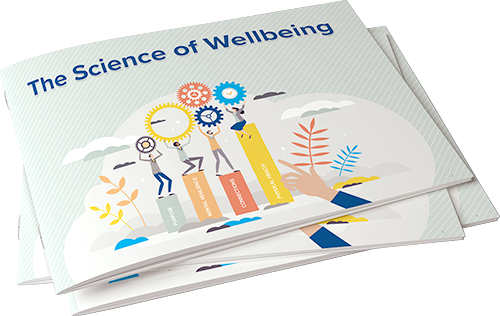This section of our website is an invitation to join a community of like-minded people who share similar beliefs. The most important of which is that work can be one of the biggest contributors to your health and wellbeing. Individuals who take the time to deeply understand themselves, their strengths, their weaknesses, their loves, their hates, and the environments where they can excel, will be at a distinct advantage. Knowing these factors they can select a role, a manager, a team, an organisation, a culture where they feel a deep alignment, bringing a level of coherence to their lives, a place where they can experience flow, a place where they can be at their very best and experience a deep sense of personal satisfaction with what they are achieving as a human being – your work can be one of the best parts of your life, in The Science of Wellbeing we hope to show you how.
Everything Starts with Energy
The highest performing organisations are full of energy. From the first law of thermodynamics, we know that energy cannot be created or destroyed but it can change form.
Energy falls under two categories, potential and kinetic, potential is stored energy and kinetic is energy in motion. As human beings, we have a large amount of stored energy, in other words, potential. However, turning that potential into energy in motion is the key to ensuring that an organisation can perform at its highest level.
From studying the performance of organisations over many years to determine the factors that make them successful and ensure the potential energy of employees turns into energy in motion, we know that the general health and wellbeing of employees is the most important factor at play.
The Elements of Success
If you accept this fact it makes sense to breakdown the component parts of an employee’s health and wellbeing into its distinct elements and measure them so that we can better understand how each influences the overall sense of wellbeing that the individual feels at any given moment and the energy they must expend to deliver great work.
The Culture Connection
However, employees do not operate in isolation within an organisation, so you also need to view the system in which they exist as a whole and determine how its parts interact. We call this culture. As the father of organisational culture, Edgar Schein explains that culture has several layers from superficial (artifacts) to espoused values to deeply held assumptions that can often be difficult to uncover but play an incredibly powerful force in the ongoing operation of that system. It is the interaction of the individual employee with the culture that will determine the success or otherwise of an organisation. Building a culture of health is the key prerequisite for creating a Healthy Place to Work.
Framework for Success
In the ‘Science of Wellbeing’ document, we want to share with you our model (pillars and elements) and our Healthy Place Development Plan. Both provide a framework for any person to utilise in their ambition to move their organisation from where it is today to a high-performance system where employees have the vitality to flourish and the organisation thrives.



